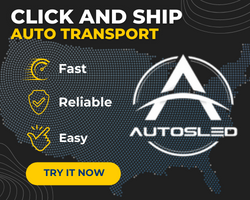Jeff asked that I revisit my “Conversion Ratio Myth” argument here on DR, and this time I’ve got pretty graphs to back myself up. I know, you’re hooked already.
The reason I’m always on my high horse about conversion ratios is simply because it’s an unreliable metric for our industry, and I’ve always felt that it’s our job as front-runners of the Internet revolution to prevent dealers from falling back into the old thinking of “Internet = email inquiry”. It ain’t that simple, and it’s detrimental for your store to think that way.
The problem with conversion ratios in our industry is that conversion measurements are best-suited for e-commerce sites, and we’re not e-commerce in any way, shape or form (yet). There are so many things that can happen on a dealer’s web site that could be viewed as a successful visit, yet most of these would never be flagged as a conversion…it’s wrong for us to assume that our site fails if it doesn’t turn a visitor into an email lead.
Now, you could use conversion ratios to measure changes you’ve made to your site functionality, although there’s still plenty of opportunity there for misinterpretation. But most dealers focus harder on marketing their sites to bring in traffic than they do on maximizing user experience once the traffic gets there… and that’s where the conversion ratio ceases to make any sense as a gauge of success, because as a regional business, the more ground your advertising covers, the less effective it gets.
See, all this fancy new marketing you’re doing – SEO/SEM, blogging, social media marketing, etc. – negatively affects your conversion ratio. The visitor most likely to convert to a lead is the one who sought out your dealership specifically: either someone who typed your store’s URL directly, or ran a search query for “Joe Smith Toyota”. But neither of those things require significant marketing savvy on your part … those are your core customers who want to buy from you and just happen to be using the Internet. Anything you do beyond that is hypothetically hurting your conversion ratio, especially in the case of blogs and social media, where you may be hooking users into your site from hundreds of miles away.


So all this leading-edge Internet marketing is decreasing your conversion ratio… should you give it all up and stick to your cake customers for the sake of a 9% conversion? Well, last time I checked, no one in this business got paid on conversion ratios. The more robust your marketing strategy, the broader your presence, the more traffic you’ll pick up, the more units you’ll roll. That’s what it’s all about.
Guest posting by Mitchell Turck
Internet Consultant with WebNet Services








